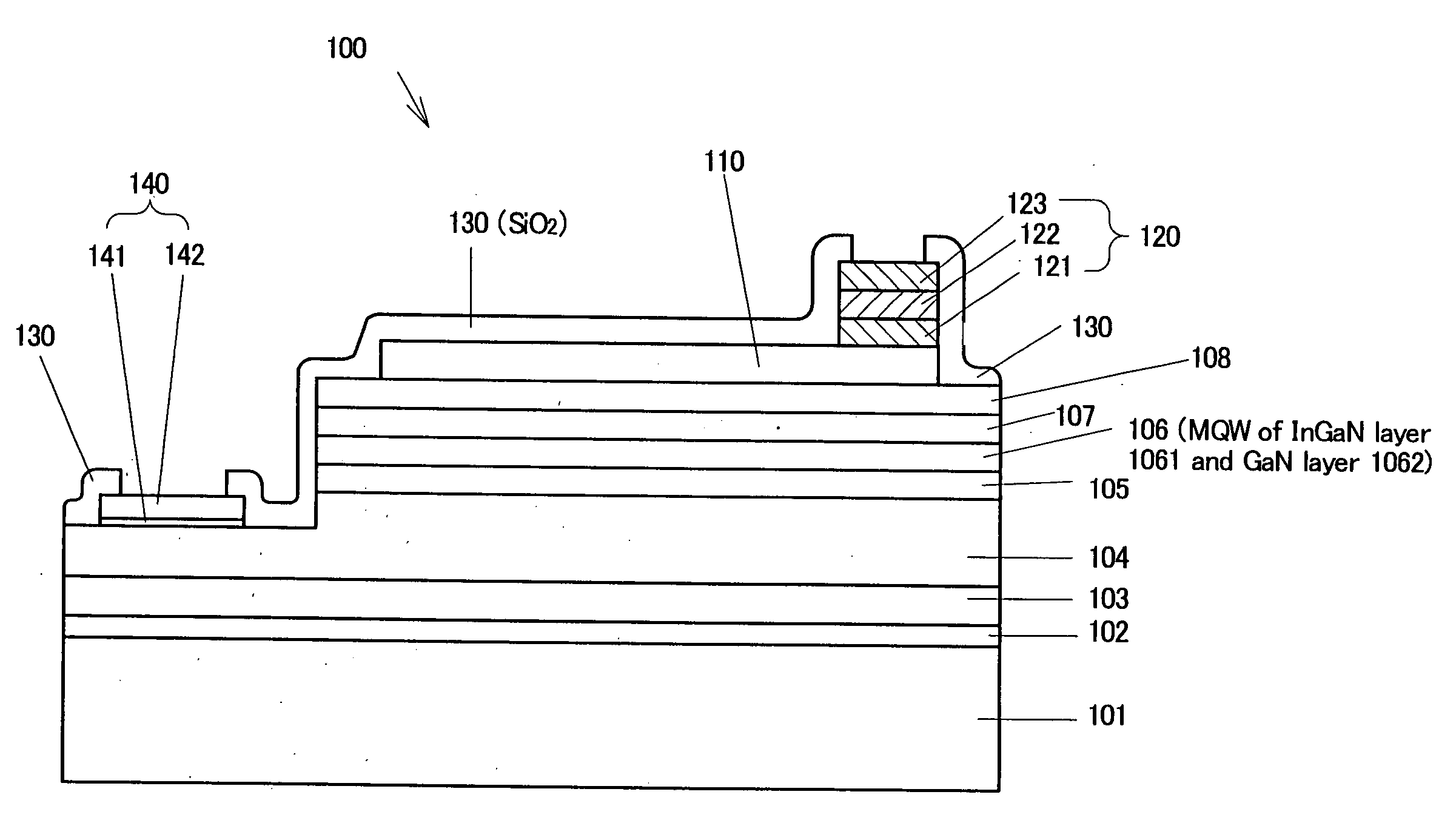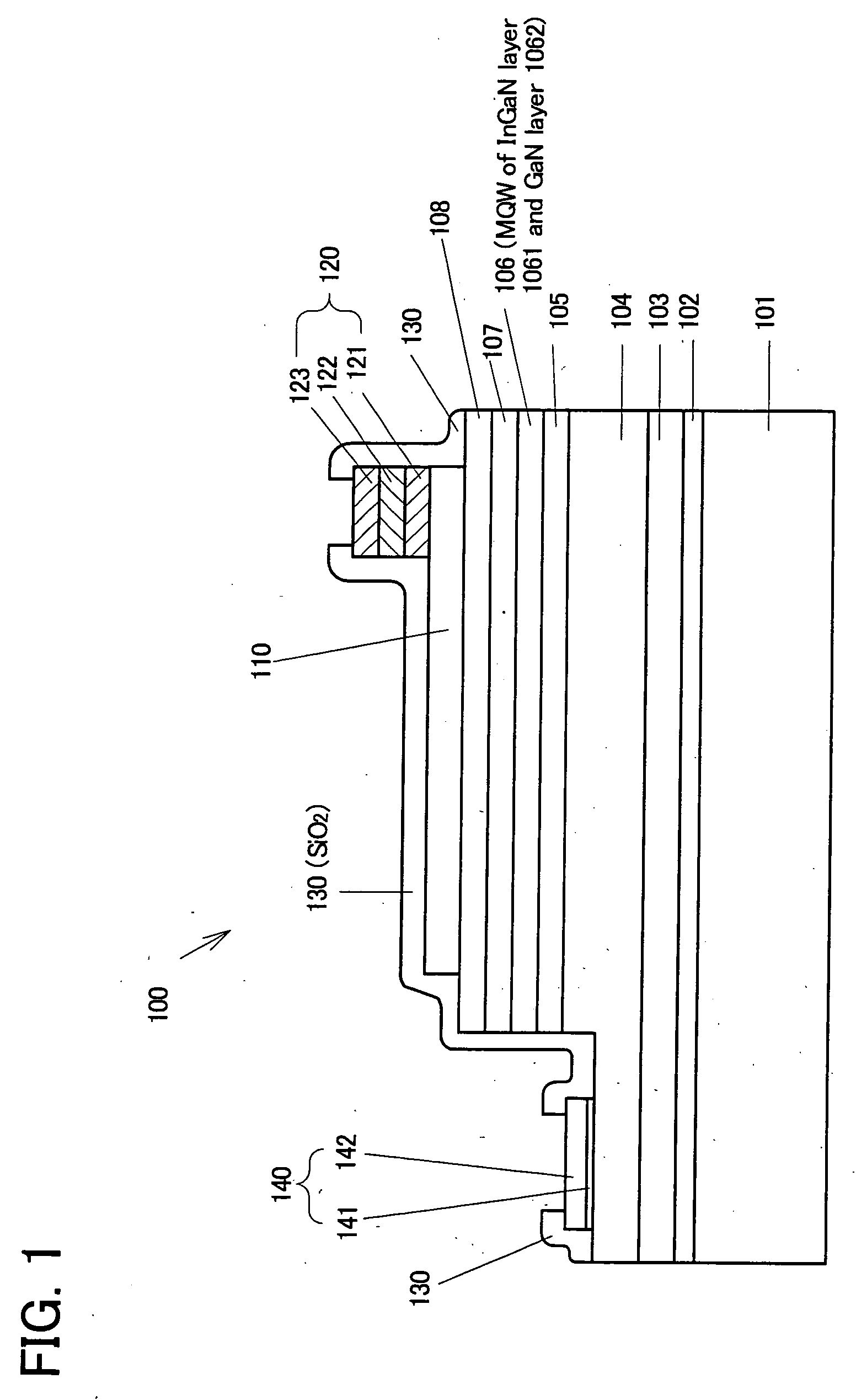Method for forming an electrode
a technology of electrodes and electrodes, applied in the direction of photovoltaic energy generation, electrical equipment, semiconductor devices, etc., to achieve the effects of high light-transmittivity, low resistivity, and high transparency
- Summary
- Abstract
- Description
- Claims
- Application Information
AI Technical Summary
Benefits of technology
Problems solved by technology
Method used
Image
Examples
embodiment 1
[0027] First, the inventors of the present invention carried out the following experiment to show that desired improvement of luminous transparency of the ITO and decrease of sheet resistivity can be obtained by employing a method for forming an electrode according to the present invention. By using a mixture of tin oxide (5%) and indium oxide as a target, 300 nm in thickness of ITO was formed on a sapphire substrate through electron beam deposition. After the atmosphere in the deposition chamber was arranged to be high vacuum of 1×10−2 Pa or less, oxygen was supplied at 4 different pressures to obtain each ITO. 5 oxygen pressures were: 0.0 Pa (without supplying oxygen), 0.005 Pa, 0.015 Pa, 0.06 Pa, and 0.1 Pa. After forming 4 types of ITO, luminous transparency for blue-color light having wavelength of 470 nm and sheet resistivity were measured. Then each of the ITO was heated for 10 minutes in the nitrogen ambient at the temperature of 400° C., and luminous transparency and sheet ...
embodiment 2
[0034]FIG. 1 illustrates a sectional view of a semiconductor light-emitting device 100 according to the second embodiment of the present invention. As shown in FIG. 1, the semiconductor light-emitting device 100 comprises about 300 μm in thickness of sapphire substrate 101, on which about 15 nm in thickness of aluminum nitride (AlN) buffer layer 102, about 500 nm in thickness of undoped GaN layer 103, and about 5 μm in thickness of silicon (Si) doped GaN n-type contact layer 104 (high carrier concentration n+-layer) having Si concentration of 1×1018 / cm3 are deposited.
[0035] On the n-type contact layer 104, about 25 nm in thickness of silicon (Si) doped n-type Al0.15Ga0.85N n-type layer 105 having Si concentration of 1×1017 / cm3 is deposited, and an emission layer 106, which has multiple quantum-well structure and comprises 3 pairs of about 3 nm in thickness of undoped In0.2Ga0.8N well layer 1061 and about 20 nm in thickness of undoped GaN barrier layer 1062, is formed thereon.
[0036...
PUM
 Login to View More
Login to View More Abstract
Description
Claims
Application Information
 Login to View More
Login to View More - R&D
- Intellectual Property
- Life Sciences
- Materials
- Tech Scout
- Unparalleled Data Quality
- Higher Quality Content
- 60% Fewer Hallucinations
Browse by: Latest US Patents, China's latest patents, Technical Efficacy Thesaurus, Application Domain, Technology Topic, Popular Technical Reports.
© 2025 PatSnap. All rights reserved.Legal|Privacy policy|Modern Slavery Act Transparency Statement|Sitemap|About US| Contact US: help@patsnap.com


